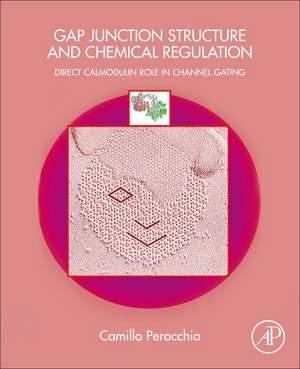Gap Junction Structure and Chemical Regulation: Direct Calmodulin Role in Cell-to-Cell Channel Gating
Autor Camillo Peracchiaen Limba Engleză Paperback – 17 feb 2019
- Contains comprehensive, historical coverage on direct cell-to-cell communication
- Provides detailed coverage of gap junction channel structure and regulation, with extensive coverage of the direct role of calmodulin in channel gating
- Delivers a thorough description of models proposed for the chemical gating of gap junction channels
Preț: 783.23 lei
Preț vechi: 1027.49 lei
-24% Nou
Puncte Express: 1175
Preț estimativ în valută:
149.91€ • 155.91$ • 125.62£
149.91€ • 155.91$ • 125.62£
Carte tipărită la comandă
Livrare economică 06-20 martie
Preluare comenzi: 021 569.72.76
Specificații
ISBN-13: 9780128161500
ISBN-10: 0128161507
Pagini: 226
Dimensiuni: 191 x 235 x 17 mm
Editura: ELSEVIER SCIENCE
ISBN-10: 0128161507
Pagini: 226
Dimensiuni: 191 x 235 x 17 mm
Editura: ELSEVIER SCIENCE
Public țintă
Research scientists interested in Cell Communication, Gap Junction Structure and Function, Connexins, Innexins, Calmodulin, Cell Calcium and Membranes. Also Cell, Membrane and Channel PhysiologistsCuprins
1. Historical background2. Ultrastructure3. Molecular structure4. Chemical gating - I. Role of intracellular calcium and hydrogen ions5. Chemical gating - II. Direct calmodulin role6. Chemical gating - III. Models7. Connexin-related diseases8. Future perspectives9. Further reading
